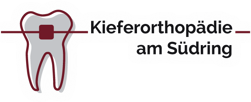Early treatment: Gentle support for healthy development
Consultation
To ensure that your child’s teeth, jaws, muscles, and jaw joints develop harmoniously and healthily from the outset, early orthodontic treatment may be advisable in certain cases, even during the deciduous dentition stage.
The aim is to intervene in jaw growth at an early stage and correct functional imbalances or malocclusions before permanent damage develops.
Using particularly gentle, child-friendly methods, we support natural development and ensure that your child’s jaw growth is guided in the right direction. In this way, more extensive measures can often be reduced or even avoided later on.
We will discuss whether early treatment is appropriate during a detailed consultation. We will take the following factors into account, among others:
- the current condition of the teeth (number and condition of milk teeth),
- the severity of any jaw or bite misalignments,
- and your child’s physical and functional development.
As a rule, classic early treatment begins between the ages of 5 and 6, but in certain cases, an earlier start, around the age of 3, may be indicated.
Typical indications
Typical indications for early orthodontic treatment include:
- Noticeable head posture
- Frequent upper respiratory tract infections
- Headaches of unknown cause
- Articulation or speech disorders
- Thumb sucking and other persistent habits
- Teeth grinding
- Front tooth trauma
- Pronounced overbite or underbite
Classic & interdisciplinary
Classic early treatment and interdisciplinary cooperation
In classic early treatment – i.e., within the framework of orthodontic indication groups (KIG) – removable braces, functional orthodontic appliances, or other targeted measures are used, depending on the findings. Particularly in more complex cases or when symptoms are functionally related, we place great emphasis on interdisciplinary cooperation with pediatricians, ENT specialists, manual therapists, orthopedists, speech therapists, physical therapists, and osteopaths. This close cooperation enables comprehensive diagnostics and holistic support for your child.
Addition by mykie®-concept
Supplementary early treatment according to the mykie® concept
In addition to classic early treatment, we offer the mykie® therapy concept, an additional approach that works preventively and focuses on the causes – even before the formal criteria for KIG apply. mykie® is aimed in particular at children of primary school age with functional abnormalities such as mouth breathing, incorrect tongue position or muscular imbalance in the mouth area.
In close cooperation with myofunctional therapists and other specialists, causes are identified and treated at an early stage before they manifest themselves in permanent malocclusions. The goal: to create space for healthy growth – functionally, structurally, and aesthetically.
Please note: Under certain conditions, classic early treatment may be covered by public health insurance if the indication level provides for this. The mykie® concept, on the other hand, is not covered by statutory health insurance because it focuses on preventive correction rather than symptom-oriented treatment.
Explanations
- Crossbite: The lower jaw is positioned sideways or too far forward and “bites over” – often the result of uneven jaw growth or functional disorders. Correction is important, as otherwise the bite may shift permanently and facial asymmetry may develop.
- Open bite: When biting, gaps remain between the front teeth – often caused by thumb sucking or tongue thrusting. This makes chewing and speaking difficult and affects the position of the teeth in the permanent dentition.
- Head posture (crooked or tilted forward): This can be an indication of functional disorders in the jaw area, restricted nasal breathing, or muscular imbalances. Poor posture often has a direct effect on jaw growth.
- Mouth breathing: Breathing is done permanently through the mouth instead of through the nose. This leads to open lips, dry mucous membranes, more frequent infections and, in the long term, to malformations of the jaw, teeth and face.
- Tongue position (incorrect): The tongue does not rest on the palate, but on the floor of the mouth, for example. This impairs pressure equalization in the oral cavity and inhibits healthy palate and jaw development.
- Thumb sucking / persisting habits: If these habits persist beyond the age of 3, they can permanently affect the bite and jaw shape – especially through pressure on the front teeth and palate.
- Teeth grinding (bruxism): Often happens unnoticed during sleep. Possible indication of stress or an imbalance in the jaw. Teeth grinding may not be a cause for concern in baby teeth, but later on it can impair healthy growth and joint development.
- Speech disorders / articulation problems: If sounds are not formed correctly (e.g., lisping), this may indicate insufficient tongue motor skills or mouth muscles – often associated with myofunctional disorders.
- Overbite: The upper incisors protrude significantly over the lower ones – partly congenital, partly functional. A pronounced overbite can put strain on teeth and joints and should be clarified at an early stage.
- Underbite (progne position): The lower incisors are in front of the upper ones. In addition to functional causes, there may also be a genetic predisposition. Early growth control can facilitate later corrections.
- Front tooth trauma: Injuries to the front teeth – for example, as a result of falls – can affect the position of the teeth and the eruption of permanent teeth. Early clarification is important for further development.


